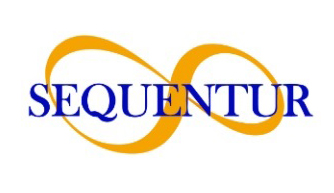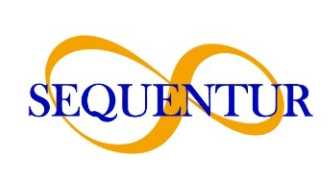Backup and Disaster Recovery: Protect Your Business
Many SMBs operate with a sense of unrealistic optimism when it comes to data loss and disaster recovery. The reality is quite different, and a lack of vigilance can have negative impacts on your business. As the rate of digitalization in business IT increases, so does the risk of data loss. Can your business afford a data-loss incident?
Data loss can occur due to human error, cyberattacks, or natural disasters. Regardless of how it happens, it can have far-reaching consequences, such as:
- Severe downtime: For SMBs, per-hour downtime costs vary from $10,000 to $50,000.1
- Damage to reputation: One-third of customers will end their association with a business following a severe data loss.2
- Regulatory penalties: Failure to protect data can draw penalties worth 2% to 4% or more of company turnover.3
- Permanent closure: Some businesses are unable to recover from an incident and close permanently.
Prioritizing backup and disaster recovery for your business is very important.
A comprehensive backup and disaster recovery solution provides secure, uninterrupted backup and quick data recovery — with a cloud-based architecture that ensures the business runs seamlessly in the event of a disaster.
What is data loss and how can it occur?
Stated simply, data loss is when digital information stored on a computer or network is compromised, destroyed, stolen, or made unrecoverable.
There are many ways a data loss incident can happen, but here are a few of the more common ones:
-
Loss of power or power surges
This could come in the form of the power grid going down suddenly in a natural disaster causing loss of any unsaved work and potentially corrupting data. It could also be a surge from a lightning strike nearby or even something silly like spilling a drink on your laptop leading to a short in the computer.
-
Mechanical Hardware failure
Hard drives and other data storage devices are mechanical in nature, and as such, they have an operational life span that needs to be monitored. They are also vulnerable to certain environmental threats such as elevated temperatures, accidental drops, static electricity, etc.
-
Hacking and theft
The methods by which modern criminals attempt to gain unauthorized access to data are ever-evolving, but in the main, it can be summed up as attempts to steal data for some gain; or to prevent legitimate access to data and demand a ransom for its return.
In any case, it is usually very damaging, and without effective disaster recovery systems in place, it can be much worse.
Key Terms Used in Backup and Disaster Recovery
The following terms will give you an idea about the type of actions and processes you should aim to implement within your business:
Minimum Business Continuity Objective (MBCO)
MBCO signifies the minimum level of output needed after severe disruption to achieve business objectives. Put another way, those services must remain active to ensure the minimum objectives of the business are met.
Maximum Tolerable Period of Disruption (MTPD)
MTPD is the duration after which the impact on a business caused by minimal or zero output becomes intolerably severe.
Recovery Time Objective (RTO)
RTO is the time it takes before employees can start working after a data-loss event. With good IT support and professional recovery systems in place, it is usually measured in minutes.
Recovery Point Objective (RPO)
RPO is the amount of work that can be lost and will need to be done again after a data-loss event. When the above professional systems are in effect, the amount of lost work is usually measured in seconds.
Deploying Backup and Disaster Recovery Today
Having an effective backup and disaster recovery solution provides several benefits. Here are the top six:
-
Stay protected against natural disasters
The first half of 2020 alone had close to 200 reported natural disasters. While it’s impossible to stop a natural disaster, a managed services provider can ensure your data is protected and take the necessary measures to prevent/minimize downtime.
-
Minimize the impact of a cyberattack
With the rate of cyberattacks going through the roof and with SMBs being a constant target of attacks, a robust backup and disaster recovery solution is one of the most in-demand IT MSP services to protect your business. With all the latest anti-virus/anti-malware and a dedicated team always monitoring your system for irregularities, an IT MSP is the best way to go to get the protection you need.
-
Safeguard sensitive data
If your business handles sensitive data like Personally Identifiable Information (PII), security measures should be taken to ensure it never ends up in the wrong hands. Safeguarding all critical data can build your business’s reputation and prevent regulatory penalties.
-
Quick recovery
At the end of the day, for most businesses, it doesn’t really matter how disaster strikes. What matters is how quickly your business bounces back. An IT service provider can set up a professional backup and disaster recovery solution to help your business get back up and running as soon as possible.
-
Reduce the impact of human error
From accidental or intentional mis-delivery or deletion of data to corruption of data, employees can pose a security threat to your business. Deploying backup and disaster recovery is, therefore, crucial. Your IT company can also help train your employees on the difference between acceptable and unacceptable data handling behavior.
-
Tackle system failure
Unexpected system failure can lead to downtime if you don’t equip your business with backup and disaster recovery. Another way managed IT service providers mitigate this is by monitoring the age and health of your network’s hardware to know and predict when it is time to upgrade/replace old hardware.
Remember, it’s your responsibility to protect your business from data loss and its chaotic aftereffects.
If you can’t handle this alone, don’t worry, Sequentur is here for you. Our many managed IT service offerings include backup and disaster recovery solutions. We can work with you to implement a resilient strategy to protect your business against data loss and give you peace of mind in the event of a disaster.
Get in touch with us today and let’s get started.
Sources:
- TechRadar
- IDC Report
- GDPR Associates


